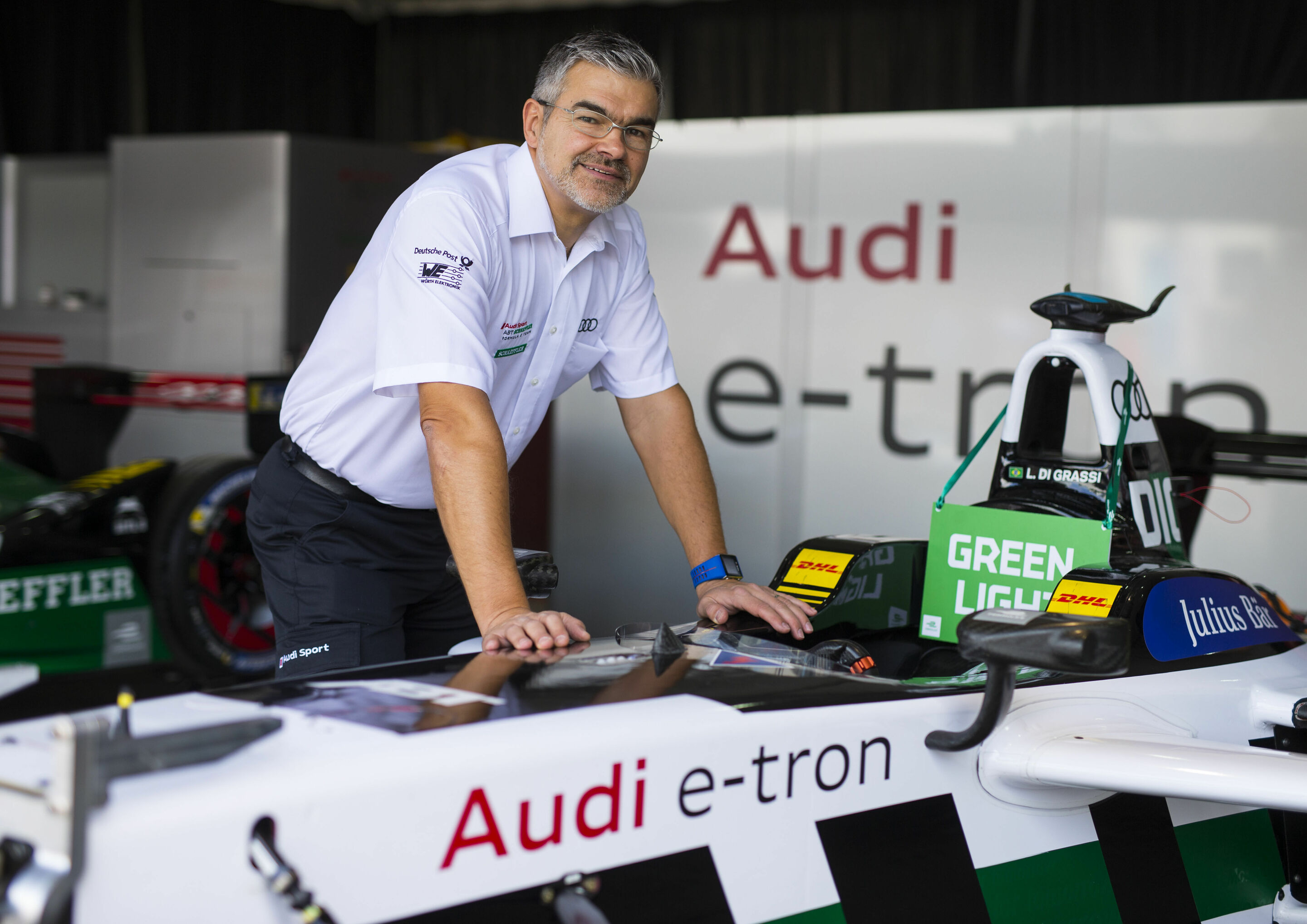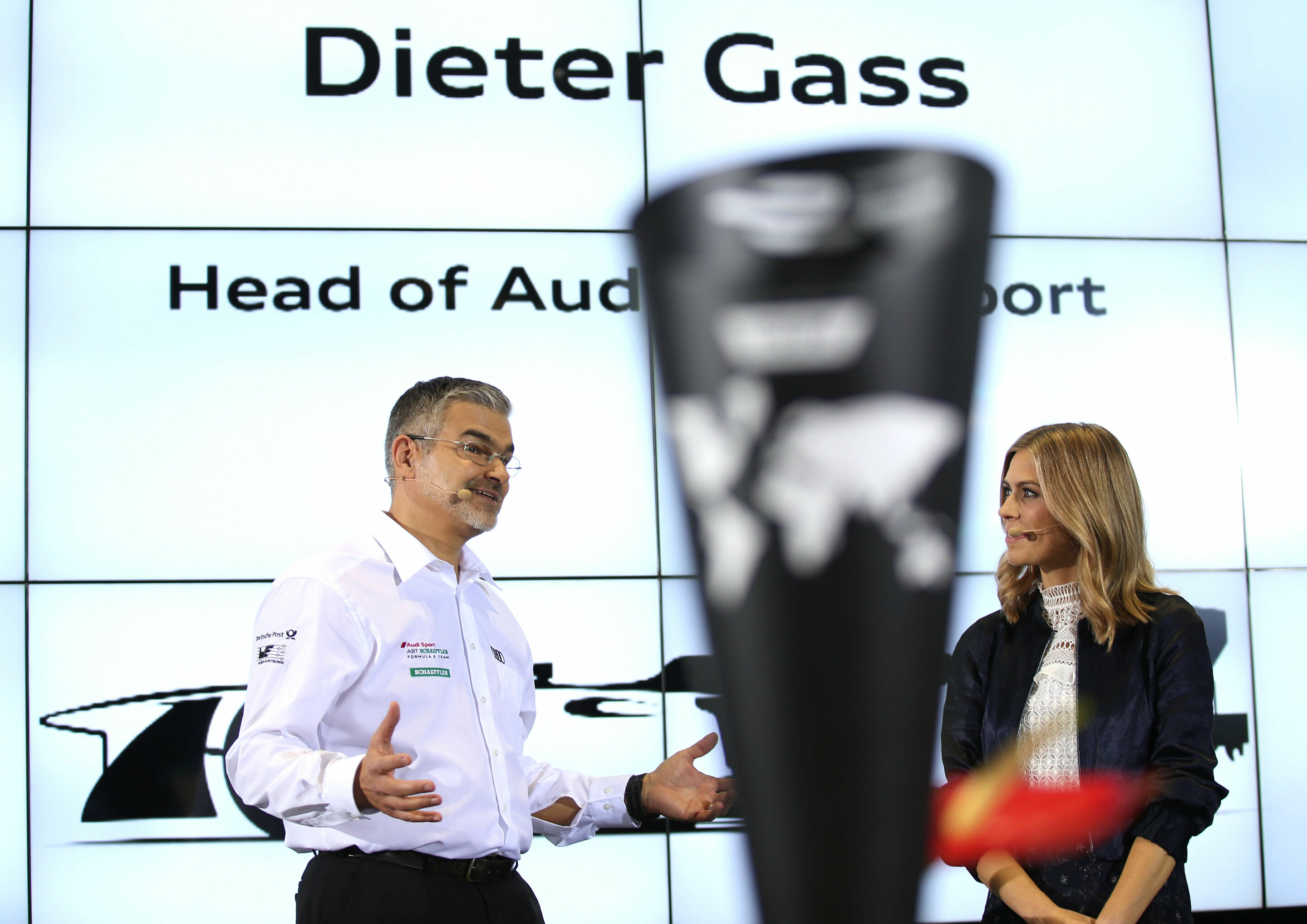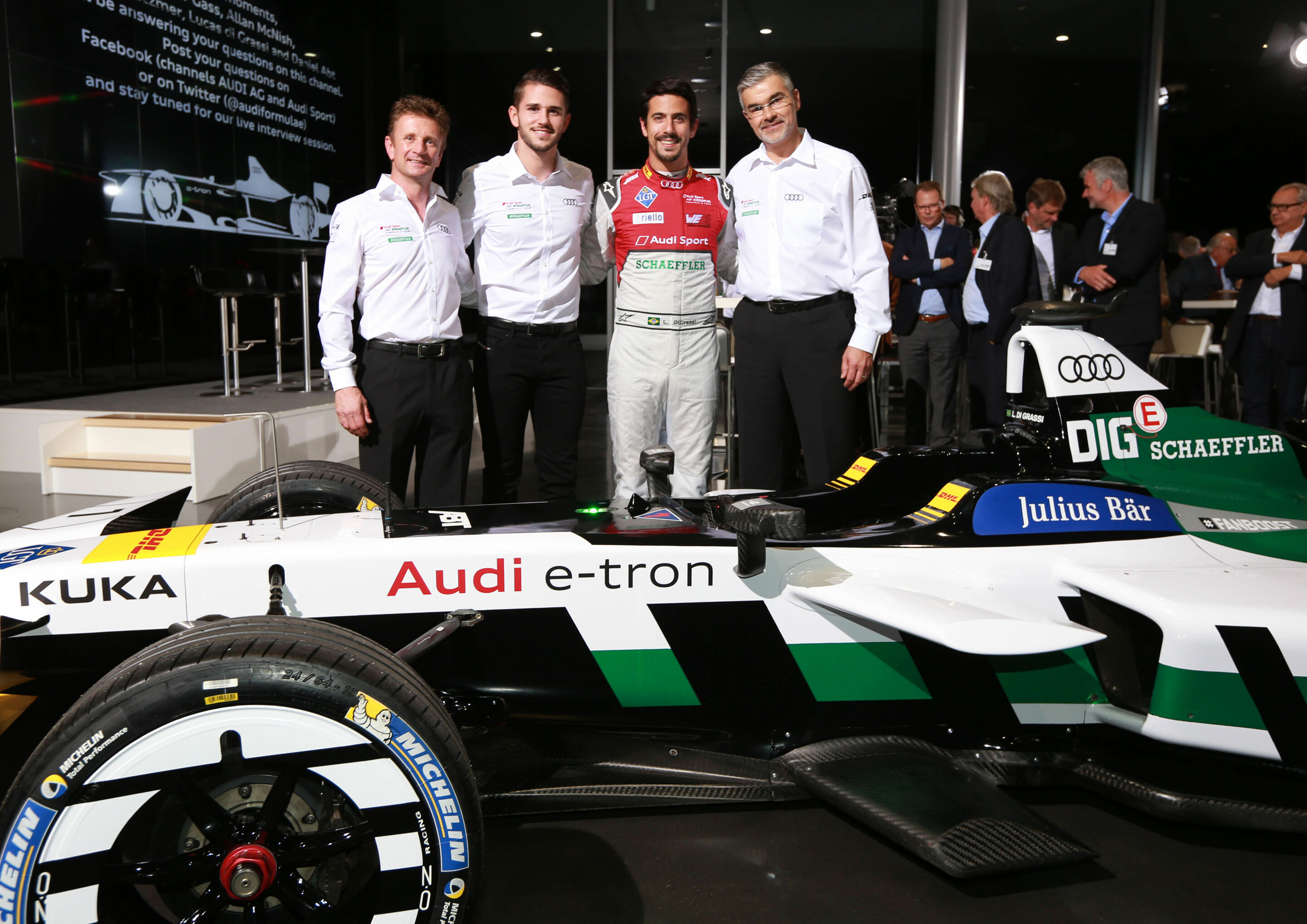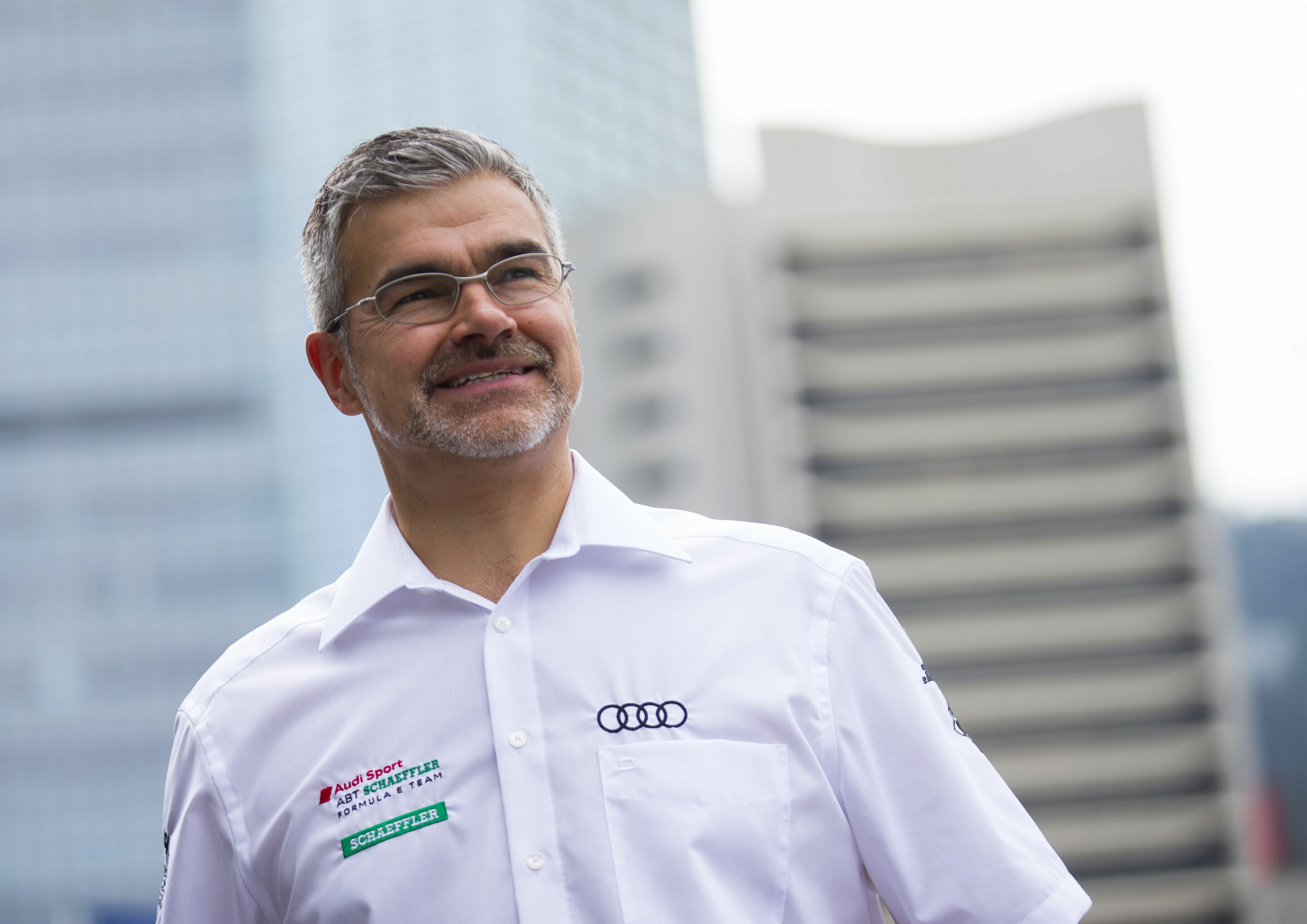Interview: Head of Audi Motorsport Dieter Gass: “Enthusiasm was sparked quickly”
Back to overviewHead of Audi Motorsport Dieter Gass about Audi entering Formula E.
Why is Audi entering Formula E with a factory-backed commitment as of Season 4?
Audi has always been active in motorsport in order to test new technologies for production or to continue to develop them. quattro drive that made Audi world-famous in the 1980s is the best example of this. The TFSI engine which today can be found in nearly all Audi model ranges was successful on the race track in the Le Mans prototype before it went into production. The TDI, not least thanks to Le Mans, became increasingly efficient and powerful. Lightweight design, LED taillights, matrix LED headlights and many other innovations had to prove their viability on the race track as well. Audi was the first manufacturer to have won the 24 Hours of Le Mans with hybrid drive. Now the subject is e-tron, which is becoming increasingly important at Audi. It’s only logical that electric mobility is reflected in our motorsport program as well and that we’re the first German automobile manufacturer to race in Formula E with a factory-backed commitment. The series currently provides the best stage for showcasing the performance of electric cars and for evoking emotions.
Since when has Audi been thinking about Formula E?
Audi started thinking about how motorsport might be possible with electric vehicles many years ago. Now Formula E, with a view toward manufacturer participation, is the fastest-growing racing series in the world and, not least thanks to our long-standing DTM partner ABT, we’ve also had a foot in its door from day one. Lucas di Grassi, who was racing for us in the WEC, was involved in the development of the racing series within the Formula E organization. So, we were always up to speed and the potential of Formula E soon became evident.
Audi, ABT and Schaeffler have previously been partners in Formula E. What will change as a result of the factory-backed commitment?
The distribution of roles can be compared to the one in the DTM in which ABT has been one of our fielding teams since 2004. Our part in the cooperation with our technology partner Schaeffer is the development and testing of the Formula E race car. We already provided technical support to the team in some areas last season while simultaneously developing the powertrain for Season 4. And, obviously, we’ve assumed responsibility for the racing activities at the venues as well.
Formula E enjoys great popularity with the manufacturers. How high is the risk that costs will soon be getting out of hand?
Obviously, strong competition always poses a risk that this may happen. But the FIA and the Formula E organizers are very conscious of this risk and relying on a ten-year plan that to date has been creating very effective cost limits. Naturally, this is a balancing act. It’s necessary to find the right balance so that the Formula E product can continue to develop and remain permanently attractive to the manufacturers. At the same time, it has to remain affordable. Alejandro Agag and his team have been doing a very good job in this respect to date as well.
What are the differences between the Audi e-tron FE04 and the predecessor model in which Lucas di Grassi won the 2016/2017 champion’s title?
Obviously, it’s not just the new name and the progressive livery. We have developed a completely new powertrain together with our technology partner Schaeffler. You can immediately tell this by looking at the new carbon housing of the powertrain. The car also sounds different because we’re pursuing new avenues in terms of technology. But we’d still like to keep the details under wraps at this early stage because our competitors – just like us – are already working on the powertrain for Season 5. Just so much: the e-tron FE04 only has one forward gear.
Many motorsport fans tend to view Formula E critically. How are you planning to win over the skeptics?
I’m not sure if we even want or have to do that. After all, we’re not cancelling “classic” motorsport at Audi in favor of Formula E. We want to stay involved in racing series like the DTM because, after all, internal combustion engines and hybrid powertrains will continue to exist in production models for the foreseeable future. At the same time, the proportion of electric vehicles which in the first step are particularly attractive for our customers in conurbations is growing. We reach those with Formula E races being held in metropolises like Hong Kong, Paris, São Paulo, New York or Montreal. There, people who otherwise would probably never get in touch with motorsport are at the race tracks. The way I see it, Formula E is not in competition with existing racing series. It is a complement that develops new target groups for motorsport. And I can only recommend to all skeptics to visit a Formula E event themselves. Spectators with an interest in technology and an open mind for innovations find an incredible offering at the E-Village, plus, Formula E delivers really great racing. I personally grew up with internal combustion engines and first had to get used to races with electric vehicles. But my enthusiasm was sparked quickly.



